Green Cay Wetlands - Part 2
by Susan Collins
Reader Susan Collins shares some more of her magnificent photographs and memories from the Green Cay Nature Center at Florida.
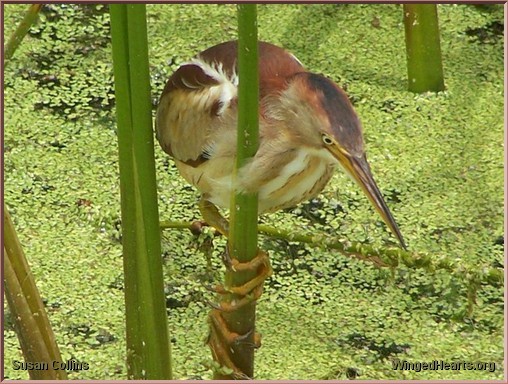
A Least Bittern inspects the duckweed for a juicy meal.
Least Bitterns. the smallest of all herons live in freshwater marshes rich in dense vegetation or in mangroves. The Bitterns can straddle reeds which enables them to feed in water much deeper than other herons. The birds are very shy running away from intruders jumping from one stalk to another, taking short flights only if necessary and diving back into its favorite hiding spot in the thick vegetation.
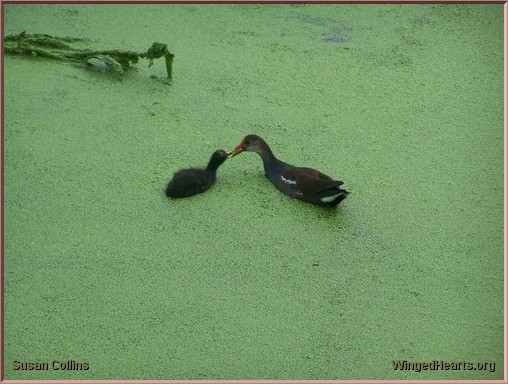
A Common Moorhen feeds one of her chick some of the green duckweed from the surface of the water.
Common Moorhens are inhabit shallow freshwater marshes are great swimmers even though they do not have the advantage of webbed feet, but they do have long toes. Some moorhens have flat wedge-shaped shields while others have an elliptical rounded frontal shield.
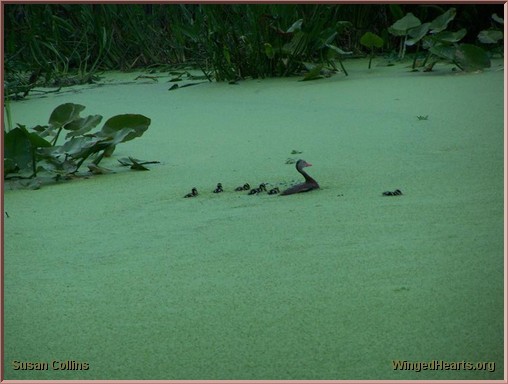
Black-bellied duck with her flotilla - there is always one who's 'out of step' with the others and strays in another direction.
Black-bellied whistling ducks are a nocturnal species and more closely related to geese than ducks. They do tend spend more time out of water and will perch on trees. They will graze on the ground for food as well shallow water looking for vegetation, small insects and molluscs.
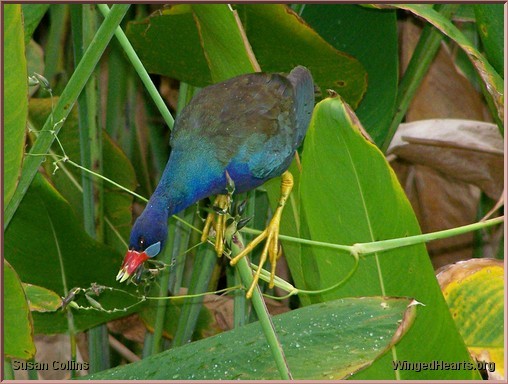
The spectacular Purple Gallinule - can comfortably walk across floating vegetation thanks to its long toes.
The Purple Gallinule is set apart by its vibrant colors are large duck like birds and needs the marshes and rice fields for breeding. The birds stay close to cover and away from open water so as to avoid predators on land and in the water. the birds have been destroyed in areas sprayed with pesticides.
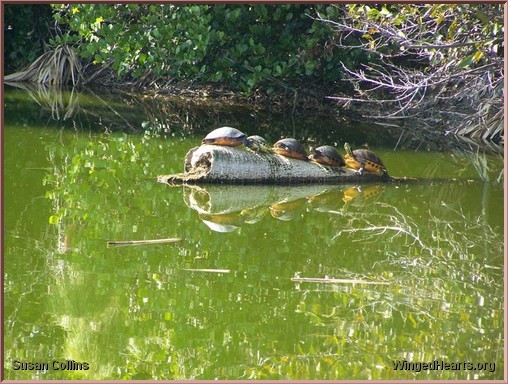
Red-eared Slider Turtles on a submerged log at Green Cay
Slider turtles too love the marshes and swampy areas, but enjoy the warm sun where they can be found basking for hours. Slider turtles are omnivorous, but most tend to eat less meat with age. The turtles have webbed feet, strong claws and love to dig.
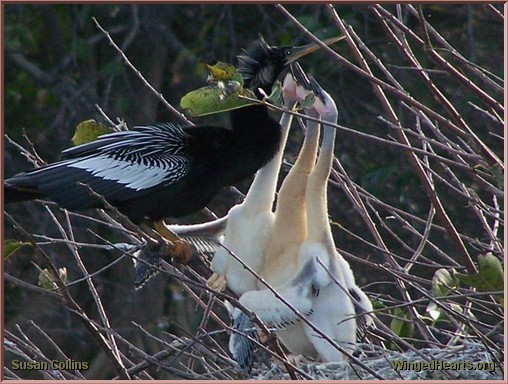
An Anhinga feeding her chicks, which you can see, are almost as large as her! Taken at Wakodahatchee.
Anhingas are also called Darters and are found in many parts of the world. The birds are known to travel as long as 2000 kms when not breeding which would explain their globalism. The birds are considered to be mostly solitary, forming pairs and loosely colonising only for breeding. Both sexes build the nest and incubate the eggs.
Thanks Susan for sharing your pictures and stories. -- Gitie

 del.icio.us
del.icio.us Digg
Digg Facebook
Facebook Google
Google Google+
Google+ LinkedIn
LinkedIn MySpace
MySpace Ping This!
Ping This! SlashDot
SlashDot StumbleUpon
StumbleUpon Twitter
Twitter Yahoo
Yahoo



